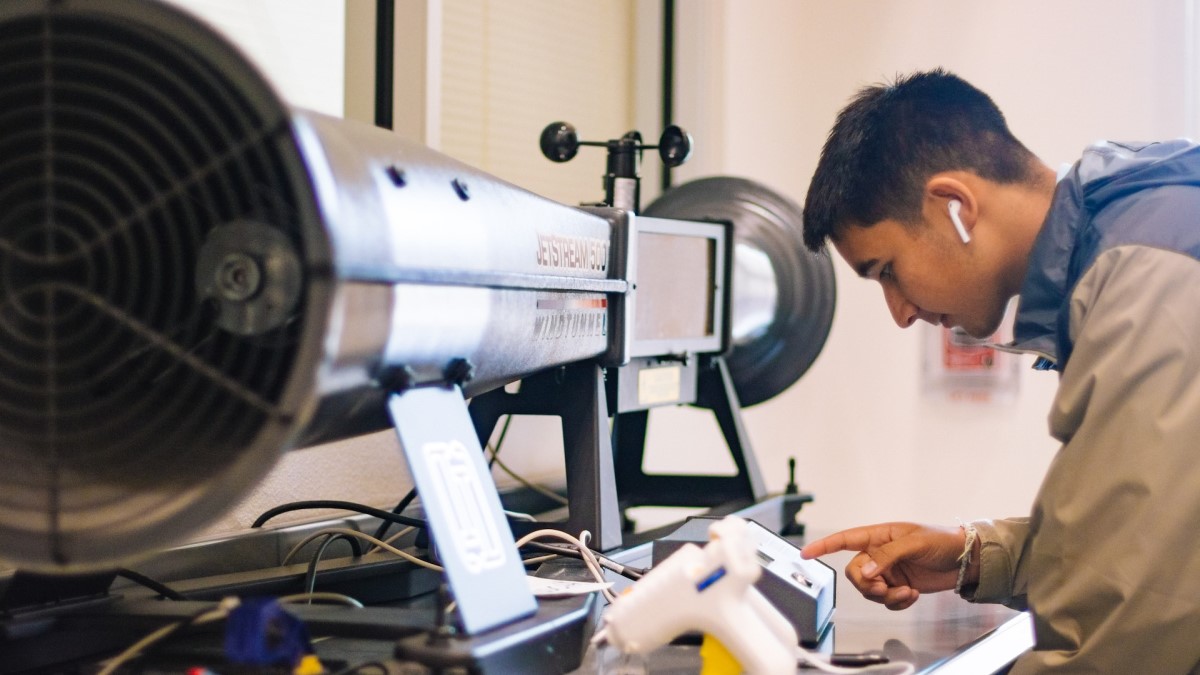Avanse Education Loan for Study Abroad: Your Complete Guide
Avanse provides loan to Indian student to help finance their higher studies abroad. Read on to learn more about how to apply and what you need to know before.

Many Indian students share the common goal to study abroad. While overseas education can be expensive, Indian students can finance their higher education through loans offered by Indian banks and financial institutions specifically for study abroad programs.
Read ahead to find a comprehensive guide to options for education loans available for Indian students studying abroad. We’ll go over the general requirements for loan applications, and what you need to know before applying for one.
In general, most Indian banks offer the IBA Education Loan Scheme to help finance your higher studies abroad. The IBA education loan model requires all education loans above INR 7,50,000 to be secured by collateral, such as a mortgage of similar value.
Additionally, many banks and financial institutions offer their own education loans product with specific terms and conditions. Some also offer collateral-free options for students pursuing higher education in qualifying premier institutes abroad.
The application requirements, processing fees, and repayment terms for education loans vary from one financial institution to another. Many of them require borrowers to contribute a margin (or a downpayment) on a pro-rata basis - which can be covered by scholarships earned by the student. But there are also providers with no collateral or margin requirements, and instead evaluate your loan application based on future earning potential.
The IBA scheme has no set minimum or maximum for education loans. However, individual bank policies can have loan ceilings according to their lending policy norms. Education loans are generally intended to cover the entire expenditure of the student while studying abroad.
Study abroad education loans are available for Indian students pursuing graduate and post-graduate programs, and technical courses in recognized universities and professional institutions overseas. These courses can include:
Many banks may also require an insurance policy to be in place to get a loan, with the ability to roll the premium into the loan cost.
Study abroad loans are available to finance university fees and educational expenses such as the cost of books and laboratory equipment. In addition, many providers also cover flight expenses for your travel to the foreign country, and everyday living expenses such as hostel accommodation.
Borrowers are eligible for the loans only after being accepted as a student at the university or institution. But you may be able to request a provisional loan sanction letter if you need to demonstrate any proof of funding before, such as with the I-20 form for universities in the US.
Note that the university fees are generally paid directly to the university while living and other expenses are credited to the student's account overseas.
To manage your everyday expenses, opening your account is one of the first steps you’ll need to explore when you arrive abroad for your studies. We invite you to check out the Wise multi-currency account, available for residents in supported countries.
Indian students exploring ways to finance their dream of studying abroad have several options for education loans. Students from low-income families and socially disadvantaged classes can benefit from government schemes. Many of India’s public and private sector banks offer education loans for students intending to pursue higher education abroad. There are also many private companies, within India and abroad, which cater to students from India. Some students may further consider personal loans, or take out a loan against property.
Each option has its own requirements and costs involved, and that, too, varies based on the provider. Here we’ll go over these options, and review some of the top providers under each category.
The Government of India has loan provisions for qualifying students. Indian government schemes offer subsidies, scholarships, interest waivers, and concessions, subject to specific eligibility norms, including academic performance and family income.
Based on students’ income background, they may be able to qualify for interest subsidies on education loans from public sector banks. Any such programs, offered by the state governments, are only available to residents of that state. The Government of Gujarat, for instance, has introduced various education loan schemes and subsidy/scholarship programs for deserving and eligible students to fund their higher education abroad.
Another popular option for students belonging to specific listed communities is the education loan scheme offered through NBCFDC. The Central Government has another program called Dr. Ambedkar Central Sector Scheme for OBC and EBC candidates.
One highly popular initiative by the Indian Central Government is the launch of Vidya Lakshmi portal launched under the ‘Pradhan Mantri Vidya Lakshmi Karyakram’ initiative. The portal offers a one-stop platform through which students can apply for and compare options from multiple providers.
| 🌍 Foreign Government Schemes for International Students | |
|---|---|
| It's worth noting that international students from India may have the opportunity to take advantage of government schemes in foreign countries. For instance, some public universities in Germany and Norway offer high-quality university education without charging any tuition fees whatsoever. This can be a fantastic opportunity for students who are looking to broaden their horizons and study abroad. It's important to keep in mind that eligibility requirements can vary significantly, and admission can be highly selective depending on the specific country in question. |
Most Indian public and private sector banks have specific education loan programs for Indian students who want to pursue higher education abroad. Many public sector banks offer education loans modeled along the lines of the IBA loan scheme. In addition, these banks also offer their own education loan schemes with varying requirements and costs.
Many private sector banks offer education loan schemes with variations such as loan amount limits, collateral requirements, eligibility criteria, interest rates, and modes of loan application.
| Our reviews of top banking providers offering loans for study abroad | |
|---|---|
Besides banks, many other financial institutions in India are now providing education loan products for eligible students. The loan structure offered by private lenders is comparable to that of banks, but the interest rates and collateral requirements may vary depending on factors such as the loan amount, the reputation of the foreign university, and the type of course pursued by the student.
| Top private lenders offering education loans for study abroad | |
|---|---|
Indian students can also apply for education loans from private lenders abroad. Such loans may be harder to qualify for, but these providers may not require any co-signers, guarantors, or collateral. These private lenders tend to evaluate your application based on your future earning potential instead.
The application procedure, eligibility norms, and interest rates for these loans differ from those applicable to Indian providers. Many of them allow for applications to be completed fully online.
| Top international lenders offering study abroad loans for Indian students: | |
|---|---|
While conventional education loan is the more popular option for those who want to study abroad, students can also consider taking out other kinds of loans to help finance their international educational expenses. If you have a current income with a good CIBIL score, you may be eligible for a general personal loan at attractive rates.
Alternatively, you may consider drawing out a loan against land or real estate. Loans against property can require additional paperwork and an inspection process from the provider to ascertain the value of your property and its relationship to the owner.
These options are available from several banks and non-banking lenders in India, such as Bajaj Finserv – one of the top providers in this category.
Indian students who have secured admission to a recognized study program abroad are eligible to apply for education loans from banks and other financial institutions. It is important to note that, in general, one's household income is not the primary factor that determines loan eligibility, except for certain government schemes. However, it is crucial to ensure that your overall application is strong, as this can impact the likelihood of loan approval and the interest rate offered.
A student’s profile is one of the major factors in eligibility for a loan, whether at a bank or other financial institution. Loans qualifying for government subsidies and schemes have specific qualifying criteria depending on the specific scheme. Here is an overview of general eligibility criteria:
In order to assist with your loan application, lenders typically require documentation that supports your request for a loan. Here’s an overview of documents asked during the loan application process:
Loan providers may require supplementary documentation pertaining to their financials. Such documents may include but are not limited to information regarding collateral, expenses that are not covered by standard tuition fees, or any other relevant financial details.
Since most student applicants may not have regular income sources, education loans typically require parents, guardians, or other family members to join as co-applicants or guarantors to the loan. Under such circumstances, banks can seek information about the co-signers or guarantors regarding their income, assets, liabilities, and credit rating.
Another way providers reduce the risks of lending is by requiring collateral. Banks’ individual programs may have different requirements, but collateral can be accepted in the form of fixed deposits or property mortgages.
Generally, the applicant’s income is not a qualifying basis for an education loan; instead, banks look at the future earning potential of the student. This is why students enrolling in prestigious universities do not always need to provide collateral for loans.
For education loans up to INR 4,00,000, no down payment is usually required. However, if the loan amount is higher, a margin payment from the student may be necessary. Scholarships can be factored into the margin calculation. Moreover, applicants have the option to pay the margin proportionally at the time of each disbursement.
The processing fees for education loans depend on individual banks and financial institutions. For example, the loans under the IBA education loan scheme do not have any processing fees, but other loan programs from Indian banks have differing fee structures, depending on the lender, the loan amount, and the collateral value.
Additionally, applicants have to cover the costs of any collateral audit, which includes evaluating the property and verifying the title deeds.
Students in India can apply for education loans for higher education abroad in various ways. Here are the general steps to applying for a study abroad loan.
You can also apply for the education loan directly from the bank or institution’s official portal online. This is a convenient option as you can complete the application process from the comfort of your own home.
Alternatively, you can visit the nearest local branch in person, where a representative will assist you with the application requirements. This option may be preferable if you have any questions or concerns that you would like to discuss in person.
Regardless of which option you choose, it's important to make sure you have all the necessary documentation and information ready to ensure a smooth application process.
When seeking a loan from private lenders in India or abroad, you can easily complete your application online and submit any necessary documentation through their website. It’ll be helpful to become familiar with the application process beforehand so that you can complete it accurately and within the time you need.
Generally, banks pay the university fees and charges directly to the university’s account which would be provided by you in the fee structure statement. However, many banks can also reimburse applicants who have already paid the university fees themselves - and supported by original payment receipts.
Some lenders transfer tuition and other fees to the applicant’s account, in which case the applicant will need to transfer the money abroad and pay the university directly.
| Poor money transfer rates can result in hidden costs for international students, so be mindful of the transfer fees and currency conversion rates when you send money abroad. |
|---|
Most education loan providers offer a moratorium, or a loan-repayment holiday period during which they do not need to make any payments. This moratorium lasts through the duration of your studies, plus additional 6 to 12 months after. You will be expected to start repaying your loan on a monthly basis after the moratorium ends.
The loan repayment terms generally range from 7 to 15 years and depend on the lender’s policy and your individual loan application. Education loan providers often allow borrowers to prepay their loan early without charging any penalty. However, before prepaying the loan, borrowers must refer to the respective lender’s loan terms and conditions.
Students and co-applicants with education loans from Indian lenders are eligible for income tax deductions under Section 80E of the Income Tax Act. This allows individuals to claim a 100% deduction on education loan interest repayments without any ceiling in a financial year, for up to 8 years.
Need to send money overseas? Make international remittances easier with Wise, which uses smart tech to make international transfers safe, secure - and cheap. Wise can help you save with a transparent low transfer fee and the mid-market exchange rate, which is the same as the one you see on Google.
And once you arrive abroad for your studies, check out the Wise multi-currency account available for residents living in supported countries. Enjoy an account as worldly as you are and spend just like a local when you travel abroad with a linked debit card, while also paying less in fees.
Please see the Terms and Conditions for your region and visit our pricing page for the most up-to-date pricing and fee information on Wise products.
Cover photo by Baim Hanif on Unsplash.
*Please see terms of use and product availability for your region or visit Wise fees and pricing for the most up to date pricing and fee information.
This publication is provided for general information purposes and does not constitute legal, tax or other professional advice from Wise Payments Limited or its subsidiaries and its affiliates, and it is not intended as a substitute for obtaining advice from a financial advisor or any other professional.
We make no representations, warranties or guarantees, whether expressed or implied, that the content in the publication is accurate, complete or up to date.

Avanse provides loan to Indian student to help finance their higher studies abroad. Read on to learn more about how to apply and what you need to know before.

Complete guide to Leap Finance study abroad loans for Indian student pursuing MS in US. Read on to learn how to apply and what you need to know before you do.

Complete guide to Juno for international students: an online platform facilitating student loan deals for students pursuing higher studies in USA.

Studying abroad is a big financial investment for students. Research carried out by Wise, the global technology company building the best way to move money...

Review of Prodigy Finance Collateral-Free Study Abroad Loans for International Students. Read on to learn how it works and what you need to know before applying

MPOWER offers no-collateral loans with no security required for international students pursuing higher education in the US and Canada. Here's a complete how-to.